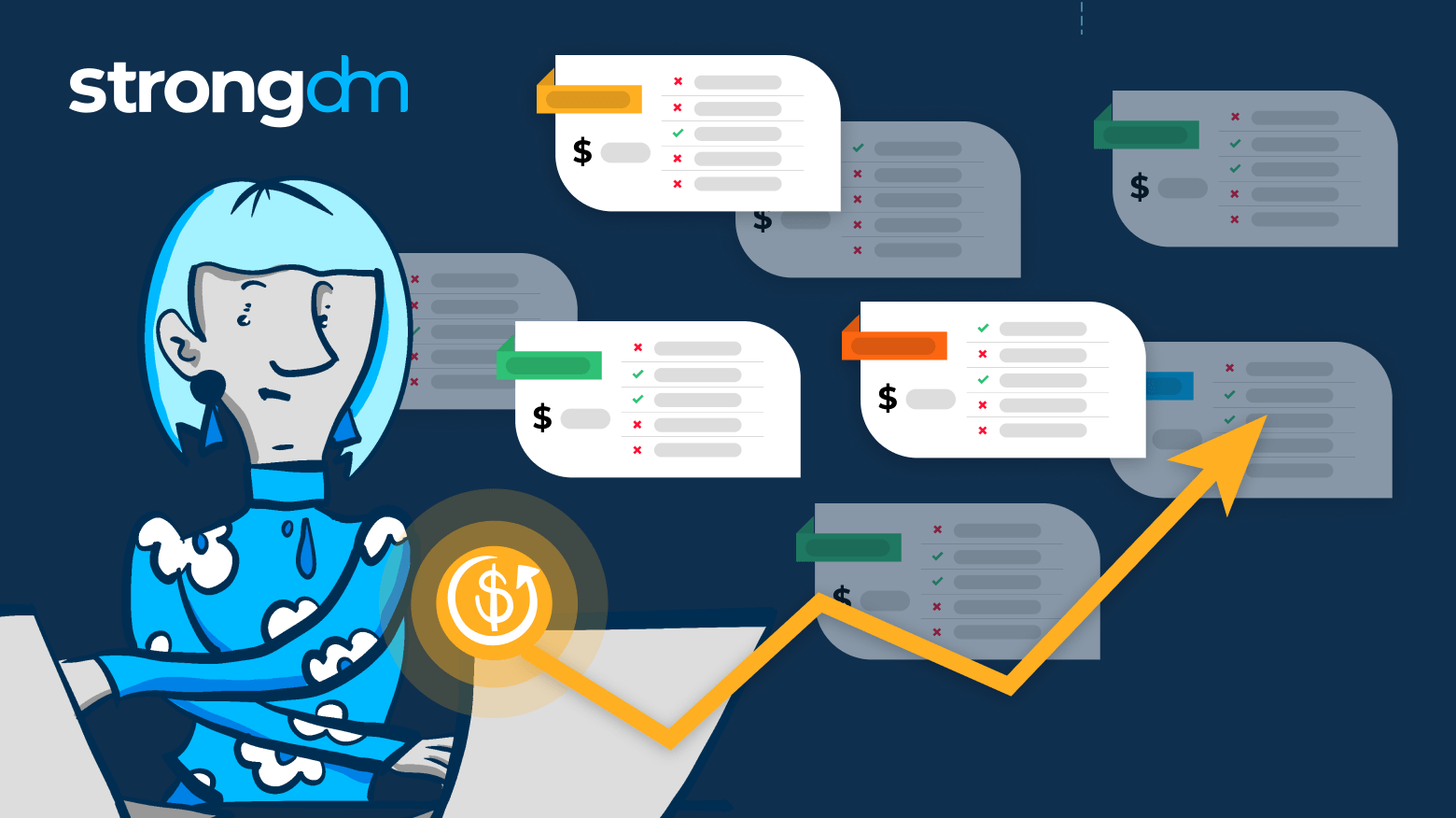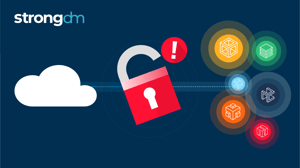PAM Pricing Simplified: Your Cost and ROI Explained


Written by
John MartinezLast updated on:
October 17, 2025Reading time:
Contents
Built for Security. Loved by Devs.
- Free Trial — No Credit Card Needed
- Full Access to All Features
- Trusted by the Fortune 100, early startups, and everyone in between
Summary: The cost of a privileged access management (PAM) solution goes beyond the licensing fees. While it’s tempting to look only at the initial costs, evaluating privileged access management pricing includes examining other factors to determine whether the solution will provide a real Return on Investment (ROI) or cause more problems than it solves.
That’s why companies need to calculate what kind of ROI they will get when choosing a PAM solution, in addition to evaluating privileged access management pricing.
How Much Does a PAM Solution Cost?
The cost of a Privileged Access Management (PAM) solution starts at $70/user/month. That includes all databases, servers, clusters, web apps, and clouds, with auditing and integrations. Also, no metering, no data limits, and no professional service fees.
However, most PAM vendors prefer to keep their pricing private, which makes it hard to calculate both the cost of the solution and the ROI it can generate. That’s why StrongDM keeps it simple with $70 per user per month pricing.
Calculating the ROI of PAM for DevOps/Engineering Teams
First, consider the DevOps/Engineering teams. They’re responsible for building the product and need to gain access to critical infrastructure to develop, test, and release. But if they can’t get into these systems, they lose productivity, resulting in missed deadlines and missed SLAs.
⚠️ Traditional PAM deployments have gaps. Learn how to protect your databases, the cloud, Kubernetes, and more with our legacy PAM augmentation guide.
Onboarding cost
As companies grow, they bring on new DevOps and/or Engineering team members But getting them access to critical systems may take some time. The right PAM solution will make onboarding much faster, allowing them to get to work. With a PAM solution that simplifies onboarding, organizations save an average of $182,000 annually. Here are some questions to ask when evaluating the onboarding costs of privileged access management solutions.
How many engineers do you typically onboard per year?
For larger companies that aren’t bringing on more than one or two new hires yearly, maybe this doesn’t matter. But for those that are constantly hiring new engineers, the hours spent onboarding new hires can quickly add up.
How many admin hours does it take to provision credentials for each new hire?
In addition to the number of engineers being onboarded, it is also important to consider how long it takes to provision their credentials. A long provisioning process not only keeps the new hire from getting started but also steals away time from admins who could be working on revenue-generating projects.
How many hours does it take for team members to receive credentials?
When team members need access to new or different resources, waiting hours can hinder their ability to do their jobs.
Privilege escalation cost
Examining privileged access management pricing also means looking at what it costs when organizations have to escalate privileges. Privilege escalations cost organizations an average of $139,000 annually. Here are some questions to ask while evaluating PAM solutions.
How many access escalation requests do you receive per year?
As projects become more complex, engineers need more access to resources so they can develop and test products. The more engineers a company has, the more access escalation requests they’ll need to manage. . These requests must be addressed so engineers can do their jobs.
How many admin hours are required to provision credentials?
To grant engineers enhanced access, admin hours will be required, particularly if these escalations are being provisioned manually. Admins may have to confirm that the access is needed or engage in other manual verification tasks, eating up their valuable time.
How many staff hours are spent waiting to receive credentials?
Engineers don’t ask for escalated privileges lightly. In some cases, they may need immediate access for incident response. The longer they wait, the more likely something will go wrong, requiring even more urgent triage.
Offboarding cost
Securing access to resources also means decommissioning users when they leave the organization. If this is a time-consuming process, it can easily chip away at any ROI from the PAM solution. The average organization wastes $11,000 annually on inefficient offboarding. Here are questions to ask during the PAM evaluation process.
How many engineers depart your organization every year?
As with onboarding many new users, decommissioning user access manually can quickly add up as engineers leave the organization. Additionally, manual processes mean that users may not be deactivated immediately, leaving the organization open to attack.
How many admin hours are required to revoke their credentials?
Theoretically, it shouldn’t take long to revoke credentials, but if an engineer has access to dozens of systems, an admin may spend multiple hours identifying what they could access and then revoking the credentials.
What’s the ROI of PAM for DevOps/Engineering teams?
Choosing the right PAM solution means improving productivity for the DevOps/Engineering teams while reducing the admin hours required to provision and revoke access. The average organization can save $332,000 due to the time saved on onboarding, offboarding, and privilege escalation tasks.
Calculating the ROI of PAM for Security Teams
PAM is also essential for security teams, helping them prevent outsiders from accessing critical resources. Should an incident occur, a PAM solution can help them discover what happened and take steps to avoid it in the future. As organizations evaluate privileged access management solution pricing for security teams, here are questions to ask.
Incident response cost questions
Responding to incidents pulls security teams away from proactively defending systems to reacting to a breach. It can take days, if not weeks or months, to gather enough evidence to identify where things went wrong and prevent a future breach. The organization can save $563,000 due to fewer engineering hours needed for evidence collections using the right PAM solution.
How many security incidents do you have per year?
Every organization has security incidents, ranging from mildly suspicious activity to full-scale data breaches. Each incident requires a postmortem to determine what caused it.
How many technical staff members are typically involved per incident?
The number of technical staff members that are involved - and have to take time to respond will depend on the type of incident. Is it operational, or is it a security incident like a data breach, internal disclosure, or vulnerability exploit? The investigation can require anywhere from 3-10 of your employees.
How many hours does it take to gather evidence?
Without a simple way to gather evidence, it may take more hours than estimated to understand what happened, how it happened, and how it can be prevented.
Audit response cost questions
Finally, audits are a part of doing business. When companies need to answer hard questions, they must gather evidence. The right PAM solution can save an average of $60,000 annually on evidence collection during audits. Here are key questions to determine privileged access management pricing for audits.
How many audits are run per year?
The number of audits being run every year can vary, but the more audits being conducted, the more technical team time will be needed to piece together an audit trail to satisfactorily answer questions.
How many access control questions are asked per audit?
The number of access control questions will vary based on the compliance framework. However, you can expect 15-30 questions to be based on access controls. For every question, team members will need to gather evidence.
How many hours does it take to answer each question?
The time it takes to answer each question also matters. Suppose it takes five hours to answer each question, and there are five access control questions. In that case, that’s 25 hours taken away from more strategic initiatives.
What’s the ROI of PAM for Security teams?
Between the savings from incident response and audits, the average ROI of PAM for security teams is $623,000 annually.
The Total ROI of PAM for Your Company
Choosing the right PAM solution provides strong ROI for the entire company. Combining the ROI for DevOps/Engineering and Security teams results in $816,000 saved annually.
Why Choose StrongDM as Your PAM Solution?
With its straightforward pricing, simplified access management, and inherent security, StrongDM brings a lot of value to organizations grappling with privileged access management. Companies can quickly deploy StrongDM in a matter of hours to manage access to databases, servers, cloud resources, web applications, and more. DevOps and engineering teams can access resources quickly and securely, allowing them to do their jobs faster. Because it creates a clear audit trail, security teams have what they need to respond to incidents or answer auditors’ questions in minutes, not hours or days.
But most importantly, the ROI can’t be beaten. Organizations can save hundreds of thousands of dollars by using StrongDM, making it a clear choice for your PAM solution.
If you’re ready for a transparent and modern PAM solution, then try StrongDM free for 14 days today.
Next Steps
StrongDM unifies access management across databases, servers, clusters, and more—for IT, security, and DevOps teams.
- Learn how StrongDM works
- Book a personalized demo
- Start your free StrongDM trial

Categories:

About the Author
John Martinez, Technical Evangelist, has had a long 30+ year career in systems engineering and architecture, but has spent the last 13+ years working on the Cloud, and specifically, Cloud Security. He's currently the Technical Evangelist at StrongDM, taking the message of Zero Trust Privileged Access Management (PAM) to the world. As a practitioner, he architected and created cloud automation, DevOps, and security and compliance solutions at Netflix and Adobe. He worked closely with customers at Evident.io, where he was telling the world about how cloud security should be done at conferences, meetups and customer sessions. Before coming to StrongDM, he lead an innovations and solutions team at Palo Alto Networks, working across many of the company's security products.
You May Also Like





